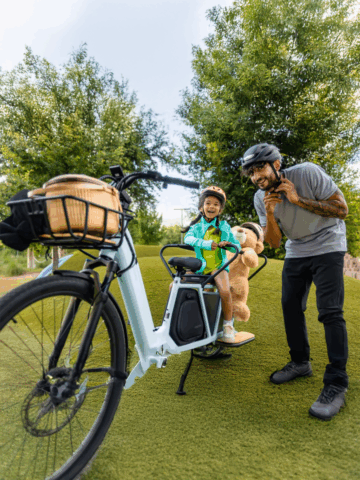It’s Earthquake Preparedness Month. To help keep you and your family safe during an earthquake, check out these important guidelines. Be sure to talk to your kids about the importance of being prepared for this, and other emergency situations.
Have a safety checklist to make sure you’re prepared:
• Become aware of fire evacuation and earthquake plans for all of the buildings you occupy regularly.
• Pick safe places in each room of your home, workplace or school. A safe place could be under a piece of furniture or against an interior wall away from windows, bookcases or tall furniture that could fall on you.
• Practice drop, cover and hold on in each safe place. If you don’t have sturdy furniture to hold on to, sit on the floor next to an interior wall and cover your head and neck with your arms.
• Bolt and brace water heaters and gas appliances, as well as bookcases, china cabinets and other tall furniture, to wall studs.
• Hang heavy items such as pictures and mirrors away from beds, couches and anywhere people sit or sleep.
• Learn how to shut off gas valves in your home and keep a wrench handy for that purpose.
• Keep an emergency supplies kit in an easy-to-access location. In addition, keep a flashlight and sturdy shoes by each person’s bed.
During an earthquake:
• Drop, cover and hold on.
• Stay away from windows to avoid being injured by shattered glass.
• Stay indoors until the shaking stops and you are sure it is safe to exit. If you must leave the building after the shaking stops, use stairs rather than an elevator in case there are aftershocks, power outages or other damage.
• If you are outside when the shaking starts, find a clear spot and drop to the ground. Stay there until the shaking stops (away from buildings, power lines, trees, streetlights).
• If you are in a vehicle, pull over to a clear location and stop. Stay inside with your seatbelt fastened until the shaking stops. Then, drive carefully, avoiding bridges and ramps that may have been damaged.
After an earthquake:
• After an earthquake, the disaster may continue. Expect and prepare for potential aftershocks, landslides or even a tsunami.
• Check yourself for injuries and get first aid, if necessary, before helping injured or trapped persons.
• Look quickly for damage in and around your home and get everyone out if your home is unsafe.
• Listen to a portable, battery-operated or hand-crank radio for updated information and instructions.
• Look for and extinguish small fires. Fire is the most common hazard after an earthquake.
• Help people who require special assistance, such as infants, children and the elderly or disabled.
• Watch out for fallen power lines or broken gas lines and stay out of damaged areas.
• Keep animals under your direct control.
• If you were away from home, return only when authorities say it is safe to do so.
For more information on emergency preparedness, visit www.redcross.org.
Get more expert health advice delivered to your inbox monthly by subscribing to the KidsHealth newsletter here.
Get more safety and injury prevention tips from CHOC experts
More children are affected by injuries than all other childhood illnesses and diseases combined. Most of these injuries are predictable and preventable. Here’s how to keep your child safe.





